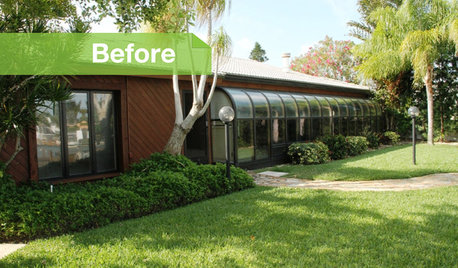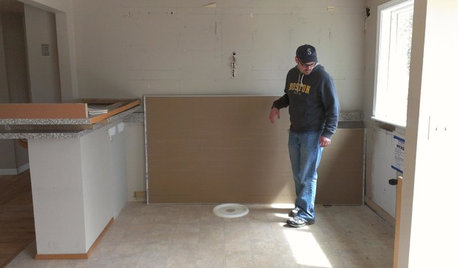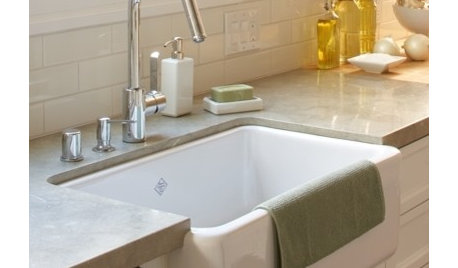Soil pH falls on a scale of 0 to 14 and indicates how acidic or alkaline the soil is. The pH level of a ground area is critical to the growth and survival of the plants there, since some plants die if planted in an area with improper pH. Before adjusting the pH, local extension agencies will test a soil sample and provide a report explaining the current pH. When needed, soil amendments raise or lower the pH when you mix them into the ground.
Healthy pepper plants, whether hot chiles or sweet bells, require temperatures within a certain range, plenty of light, and ample moisture and drainage. Soil pH influences plant health by affecting the available nutrients. Nutrients must dissolve in water before plants can absorb them; too high or low a pH may prevent some minerals from dissolving.
Peppers belong to the solanaceous group of plants along with tomatoes, eggplants and some ornamental plants. In general, peppers are heavy feeders, needing large amounts of nutrients to produce a quality crop. According to the Food & Fertilizer Technology Center for the Asian and Pacific Region, peppers and others in this group have the strongest need for nutrients from 10 days after the plants flower until just before the fruit begins to ripen. Peppers take at least 2 months from the time the plants are set out to the time they produce fruit
Soak seeds for one day in warm water, Miracle Gro (1tsp/32oz water bottle), and Epsom Salt (2oz/32oz water bottle). Use one to two teaspoons of standard 3% hydrogen peroxide per cup of warm water to break down the seed coat as well as to disinfect the seed. Then put in seed-pods. Also, use Miracle Grow instead of plain tap water in the seed-pods. Magnesium and sulfur are two major components of Epsom salt. Magnesium is a critical mineral for seed germination. Plants use it to produce chlorophyll and as an aid in the absorption of phosphorus and nitrogen. Sulfur is also a key element in plant growth, helping produce vitamins. Tests by the National Gardening Association show that Epsom salt helps produce more flowers and makes pepper plants grow larger. Epsom salt delivers an immediate shot-in-the arm of magnesium to the plants and boost growth when applied as a foliar spray. Mix 2 tablespoons of Epson Salt in an average size spray bottle...shake it vigorously and apply to plant every 2 weeks with a thorough soaking. My favorite fertilizer is Fish Emulsion. I like it because it is a great all-around fertilizer and 100% organic. An alternative if Organic isn't important to you is Miracle Gro or it's equivalent. Use your choice of fertilizer every other week on alternate weeks from the Epson Salt spray. Therefore, your Chile plants are getting fed weekly. Peppers love heat and seem to germinate best at around 80 degrees. Most pepper seeds will still germinate at cooler temperatures, but they'll take longer. The first year I used a seedling heat mat, I was amazed when habanero seedlings were ready to transplant twelve days after sowing, less time than they'd taken just to germinate in the past. The moment your pepper seeds poke through the dirt they need light and lots of it. If you plan to move your plants outside when it’s warm enough you don’t need fancy or expensive lights, basic florescent lights will do just fine. Get a florescent fixture or two and keep the lights 2 ��" 3 inches off the tops of your plants. Give your pepper sprouts 24/7 light for the first 4 ��" 5 weeks then switch them to a 16/8 cycle, also 7 days a week.
Transplant your little pepper seedlings when they have two pairs (4) of true leaves. Handle little seedlings gently by their leaves, planting them a little lower than they were growing in the seed starting tray. Dig a hole for each plant that is a bit larger than the root ball of the plant. Hold the plant by the rootball (not the stem) and place in the hole. Try to disturb the roots as little as possible. Set the plants slightly deeper (up to an inch) than they were grown in the container, and more if they are leggy. Water them in, and put them back under the lights. When I transplant my seedlings outdoors I bury a pack of matches...fanned out...a few inches below the roots in the root zone. As the plant grows the roots extend down to the matches and feed off of the sulfur. Between this and my Epsom salt spray, I've grown bell peppers as big as cantaloupes and Hot Peppers with up to 300 little Chiles on one plant. Until you move your plants outside it’s a good idea to pinch off any buds before they form into flowers. You don’t want your plants using energy on buds/flowers while they are inside, you want them using energy on growing leaves and roots. Pinching off the buds will force the plant to focus its’ energy while it’s still inside and trust me, once outside and the conditions are right it will start to bud/flower again.
If you want to make your own I like to use the following mixture:
1/3 Potting Soil Lowes - Miracle-Gro 8-Quart Seeding Soil (Seed Starting Potting Mix) $3.97
1/3 Sand Lowes - Mosser Lee 5 lbs Decorative Sand $3.87
1/3 Garden soil Lowes - Miracle-Gro 1.5 cu ft Flower and Vegetable Garden Soil (Organic Choice) $7.47
Mix all 3 parts together ($16) very well and make sure there are no lumps...to give you a well aerated mixture. Peppers like sand and it gives the roots a good chance to spread out. The garden soil has nutrients for the roots to feed on and the potting soil is nice and friable to prevent compaction. The root zone should be happy with this combination. Water the soil to a 4-inch depth. During the summer months, pepper plants may require daily waterings.
You start the seeds indoors than transfer your seedlings to the container after danger of the last frost is over. Make certain to harden them off properly first. Most varieties of peppers do well in containers. However, the more compact the plant is the better it does. The Peter Pepper is definitely rated XXX and is not for customers who are too modest. (: I recommend bringing them outdoors the first day for 1/2 hour in just partial sunlight in an area protected by the wind. Some gardeners start out even simpler than this by opening the window where plants are growing a few inches for an hour, then two, then three hours per day. After your plants are outdoors for 1/2 hour somewhat protected increase the time daily to 1 hour, 2, 3, 4, leading up to 8 hours per day. Then leave them out overnight for a full day. As the amount of hours increase you can gradually expose them to more direct sunlight and some wind. Keep in mind the soil will dry faster outdoors due to sun and wind so water more frequently outdoors. The soil in containers will dry faster than your actual garden will. This entire process takes about 2 weeks. If there is a thunderstorm or high winds...obviously skip that day. Again your primary objective is to let your plants acclimate gradually to the new outdoor environment.
When you bring container grown peppers indoors they go into a state of semi-dormancy. Meaning, they will not grow much,,,some varieties will continue to ripen for a while...but basically the growth slows down. Initially several varieties drop leaves due to the climatic change. It is not a problem.
The major reason to overwinter plants is to keep them alive and take out in late spring/early summer the following year and get a big jump on production and crop. Bring plants indoors before first expected frost in a location that gets some sun. Water every few weeks while indoors and fertilize lightly about once a month.
They will flourish when you bring them back outdoors.
I'm frequently asked if you can grow peppers indoors. The answer is no. They do not make good houseplants. However, they overwinter just great and gives you a good headstart the following year.
My seeds are dried with a little sunshine and plenty of fresh air. I hand select them and choose only the finest specimens.
















flora_uk
digdirt2
Related Professionals
Benbrook Landscape Architects & Landscape Designers · Ashburn Landscape Contractors · Canyon Lake Landscape Contractors · Cornelius Landscape Contractors · Fort Hunt Landscape Contractors · Lake Worth Landscape Contractors · Little Ferry Landscape Contractors · Mastic Beach Landscape Contractors · New Providence Landscape Contractors · Shoreview Landscape Contractors · Wells Landscape Contractors · West Covina Landscape Contractors · Sudbury Carpenters · Palmetto Bay Fence Contractors · Cayce Fence Contractors